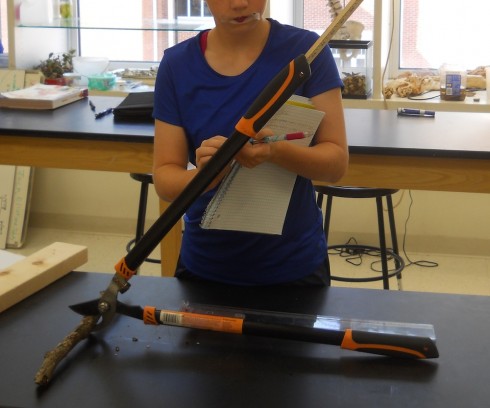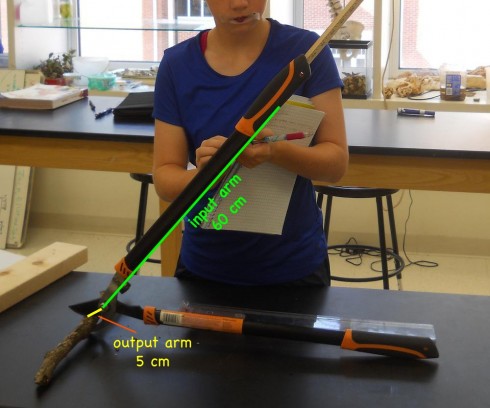
Now that we’ve studied simple machines, we’re practicing by calculating the mechanical advantage of some of the complex machines students have around the school. The clippers my outdoor group uses every Friday, for example, are a combination of a lever (the arms) and a wedge (the blade).
For levers the mechanical advantage (M.A.) is:
![]()
which in this case is measured as the distance from the bolt that the arms pivot about to the handholds (for the input force) and the stick (for the output force):
![]()
The wedge is an inclined plane, and its mechanical advantage is:
![]()
which we calculated to be about 3.
![]()
Combined, the two mechanical advantages multiply each other to give a total mechanical advantage of 36, which means that any force you apply to the handles of the clippers gets multiplied 36 times to the thing you’re trying to cut.
